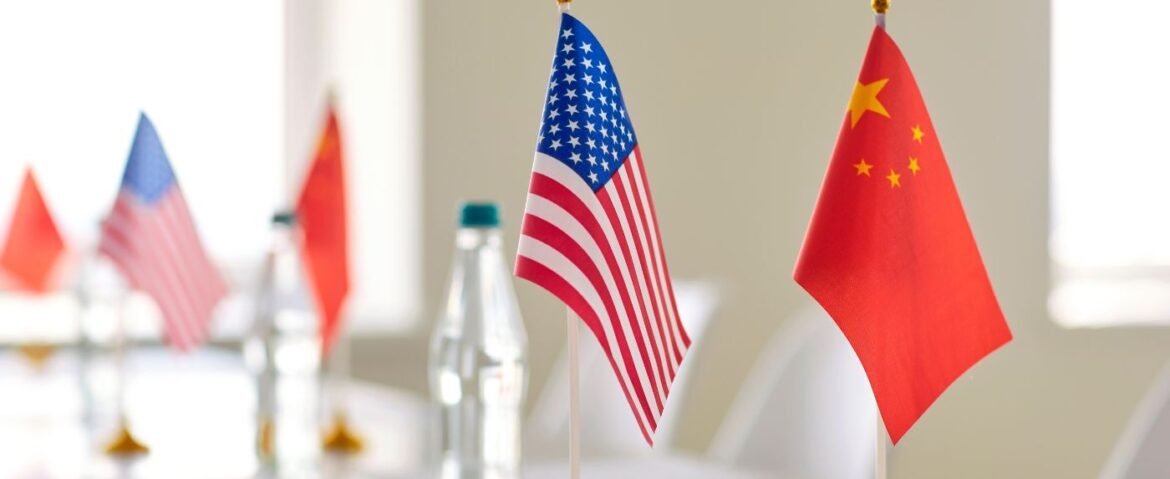The announcement of the US-China trade framework has sparked optimism across global markets, marking a significant turning point in international economic relations.
After years of escalating tariffs and supply chain disruptions, Washington and Beijing have reached a new understanding to restore trust and cooperation.
This framework sets the stage for a more predictable trade environment by addressing critical issues such as rare-earth exports, tariff rollbacks, and technology collaboration.
It also signals the easing of long-standing tensions and the beginning of a more balanced global economic order. As investors and policymakers react positively, the agreement stands as a hopeful step toward sustainable growth and stability.
How the UK-US Trade Deal Impacts Drives Change in UK Industries
A Pivotal Moment in US-China Relations
In an era where global supply chains dominate commerce, the newly announced US-China trade framework is being hailed as a turning point.
It follows months of intense bilateral trade negotiations between China and the U.S., centered on tariffs, rare-earth exports, and technology transfer.
Through this agreement, both sides are inching toward a balanced economic framework between the U.S. and China, which could reshape the future of international commerce and investment.
Why the US-China Trade Framework Was Needed
The newly announced US-China trade framework was born out of mounting economic tensions and the urgent need to stabilize global supply chains.
One of the main catalysts was China’s restriction on rare earth minerals exports, which are crucial for electronics and defense industries. In response, the United States had threatened sharp tariff hikes, worsening the standoff.
Through the new agreement, both sides are now working toward a strategic minerals supply pact that could ease pressure on manufacturers dependent on these materials.
The framework also reopens dialogue on tariff reduction talks between the U.S. and China, aiming to prevent the previously proposed 100% tariff escalation.
More importantly, it symbolizes a renewed economic collaboration between Washington and Beijing, serving not just as a ceasefire but as a long-term framework for economic partnership between the U.S. and China, encouraging investment and mutual growth.
What the Framework Actually Covers
Technology Export and Innovation Dialogue
Technology transfer and export control were central concerns during negotiations. The document leaves room for ongoing discussion on semiconductors, AI, and the regulatory environment, underscoring how innovation lies at the heart of this accord.
China’s Agricultural Purchase Commitments
Part of the agreement includes China’s agricultural purchase commitments, with promises to buy more U.S. soybeans and other farm products. This helps U.S. rural economies and offers China access to reliable supply lines.
Supply Chain Resilience in the China Trade
One major benefit is restoring confidence in global logistics. The deal addresses how both nations will handle future supply shocks—emphasizing supply chain resilience in the China trade and reducing the risk of repeated disruptions seen during earlier rounds of conflict.
Diplomatic Implications — More Than Just Economics
Xi–Trump Trade Summit and Global Diplomacy Talks
The announcement precedes a scheduled summit between the two leaders, indicating that the agreement forms the backbone of the upcoming Xi-Trump leaders’ trade summit. Earlier rounds took place in venues such as London, where London-based trade diplomacy discussions helped set the groundwork.
Senior-Level Trade Consultations U.S.–China
High-level delegations from both countries took part in senior-level trade consultations U.S.–China over weeks, refining the framework’s details and preparing for leader-level endorsement.
Global Economic Cooperation Dialogue
This deal fits within a broader context of global economic cooperation dialogue, signaling to other major economies that major powers can resolve differences and stabilize trade relationships.
Market and Investor Impact
Reopening of the U.S.-China Market Access
The framework promises a gradual reopening of the U.S.-China market access, offering companies renewed confidence in cross-border investment and partnerships that had been stalled.
Tariff Rollback Proposal U.S.–China
The agreement conceptually includes a tariff rollback proposal U.S.–China, meaning lower costs for consumers and improved business margins globally. Markets responded positively, viewing it as a sign of cooling trade war tensions.
Reestablished Commercial Flight Routes
Although not central to the document, the reopening of transport and tourist links between the two nations also underscores how reestablished commercial flight routes strengthen business connectivity. This multiplier effect adds momentum to the framework’s economic promises.
What Remains Ahead — Challenges & Next Steps
Reopening of Aviation and Travel Networks
While the trade framework addresses goods and services, full implementation will require reopening of aviation and travel networks, enabling smoother business and cultural interactions that underpin economic depth.
Normalization of Air Travel for Trade Connections
Earlier travel limitations slowed investor movement. Removing these barriers is key to the pact’s success and will aid the normalization of air travel between India and China, and similarly between the U.S. and China, highlighting how global connectivity matters for trade.
Improving Bilateral Understanding and Oversight
Finally, the long-term success hinges on institutionalizing dialogue mechanisms—not just for trade, but broader strategic issues. The goal is to improve bilateral understanding, ensuring frameworks are resilient to future geopolitical strain.
New Zealand Issues Red Wind Warning Amid Powerful Storms
Conclusion
The newly unveiled US-China trade framework marks a pivotal turn in the economic relationship between the world’s two largest economies.
By combining tariffs, rare-earth access, and agriculture deals into one package, both nations are signaling readiness for renewed engagement rather than confrontation.
Investor sentiment surges as supply chains stabilize and market access clears uncertainty. While the path ahead involves detailed implementation and oversight, the framework lays down a structural shift—from dispute to partnership. If implemented faithfully, it may serve as a blueprint for global trade diplomacy and offer relief to industries that suffered from years of tension.
FAQs
1. What is the US-China trade framework about?
It is a joint agreement charting a path for lower tariffs, critical minerals trade, and technology controls between the U.S. and China.
2. Why were rare earths such a central issue?
Because China controls most rare-earth supply while the U.S. relies on those minerals for high-tech manufacturing, they are essential to both economies.
3. How will this framework benefit global markets?
By stabilizing supply chains and reducing trade risks, it boosts business investment and lowers consumer costs worldwide.
4. Are airline or travel links part of the agreement?
While not explicitly covered, the improved economic ties open doors for the reopening of travel and aviation connectivity, which supports trade connectivity.
5. What challenges remain for full implementation?
Domestic approvals, detailed regulations, and institutionalized programs for long-term cooperation will determine the framework’s lasting success.


